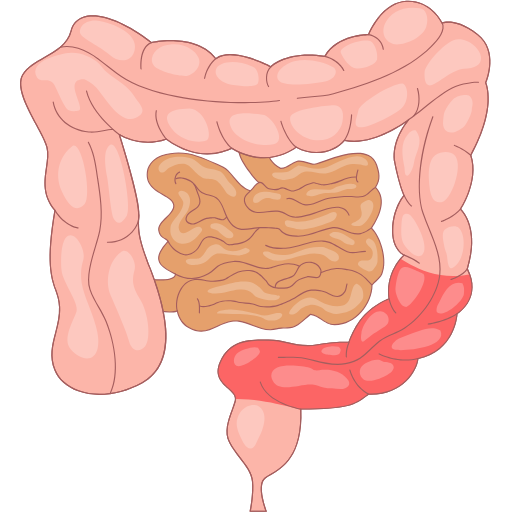Dr. Nitin Singhal
Cervical Cancer
What is Cervical Cancer?
Cervical cancer is a type of cancer that begins in the cervix, the lower part of the uterus that connects to the vagina. It usually develops when abnormal cells in the cervix grow uncontrollably, often due to long-term infection with certain high-risk types of the Human Papillomavirus (HPV). Over time, these abnormal cells can form tumors and, if left untreated, spread to other parts of the body. Cervical cancer is one of the most common cancers affecting women, but it is also one of the most preventable through regular screening and vaccination.
In its early stages, cervical cancer may not cause noticeable symptoms, making Pap smears and HPV testing important for early detection. As it progresses, women may experience abnormal vaginal bleeding, unusual discharge, pelvic pain, or discomfort during intercourse. Treatment options depend on the stage and may include surgery, radiation therapy, chemotherapy, or targeted therapies. With timely diagnosis and advanced care, cervical cancer is highly treatable, and prevention measures like the HPV vaccine offer strong protection for future generations.

Happy Clients
Successful Surgeries
Patients Reviews Rate
Years of Experience
Types of Cervical Cancer Surgery

Conization
A cone-shaped section of abnormal tissue is removed from the cervix. It is often used for very early-stage cervical cancer or precancerous changes while preserving fertility.

Hysterectomy
The uterus and cervix are removed, either through open, laparoscopic, or robotic surgery. It is commonly done in early-stage cervical cancer to prevent spread.

Radical Hysterectomy
The uterus, cervix, part of the vagina, and surrounding tissues are removed. This surgery is performed for more advanced but still localized cervical cancer.

Trachelectomy
Your Guide to Cervical Cancer
Infection with high-risk strains of the Human Papillomavirus (HPV), spread during sexual contact, is the main cause of cervical cancer. The continuous HPV infection may result in cellular alterations in the cervix, which result in the present abnormality of the cells and eventually cancer. Not all HPV infections progress to cancer; however, the prolonged infection with some strains is regarded as the most significant risk factor.
The other causes and risk factors consist of smoking, a weakened immunity (such as HIV or immunosuppressive medications), oral contraceptives used over the long term, more than one full-term pregnancy and a family history of cervical cancer. These aspects complicate the body in clearing the infections or healthy cervical cells, which, in turn, leads to the development of cancer.
Cervical cancer in its early phases typically presents no significant symptoms, and hence, the reason why several cases are identified during routine Pap smears or HPV screenings. As the disease progresses, the women can start developing symptoms that are normally confused with less serious complications, and they can be late to detect the presence of the cancer.
The abnormal vaginal bleeding (after sex, between periods, or after menopause), unusual discharge, pain in the pelvis or the lower back, and pain during sexual intercourse are the most typical warning signs. In more progressive ones, the cancer may spread to the legs, causing swelling and trouble urinating, or the urine or stool may have some blood.
The available treatment options would be based on the extent of the cancer, the patient’s age and whether or not the individual would be interested in fertility preservation. Surgery can be done in the early stages to remove the affected tissues by doing conisation, hysterectomy, radical hysterectomy or trachelectomy. Some patients may receive radiation treatment as a complement to or replacement of surgery.
In the case of cervical cancer that is advanced, treatment is often combined to include chemotherapy and radiation therapy to help manage the disease and alleviate the symptoms. Targeted therapy and immunotherapy have demonstrated good outcomes in limited cases in the past few years. The possibility of successful treatment and long-term survival will be much higher when the HPV vaccination detects cervical cancer early and through screening.
Benefits of Cervical Cancer Surgery?

Faster Recovery Time

Low Risk of Infection

Lesser Scars

Less Discomfort After Surgery

Shorter Hospital Stay

Speedier Return to Daily Life
Why Choose Dr Nitin Singhal For Colon Cancer Surgery?
Dr. Nitin Singhal is a highly experienced Robotic and HIPEC Cancer Surgeon with 15+ years of expertise and over 5,000 major cancer surgeries. He performs complex procedures including colon, pancreatic, robotic GI, thoracic, gynecology, urology, kidney, uterus, ovary, and cervical cancer surgeries.

Expertise
He specializes in advanced cervical cancer surgeries such as conization, hysterectomy, radical hysterectomy, and trachelectomy. His skill in robotic gynecology surgery ensures precise tumor removal, minimal blood loss, and faster recovery.
Infrastructure
Dr Nitin Singhal operates in modern cancer centres in Ahmedabad with robotic systems, advanced OTs, HIPEC setups, and ICU facilities. This ensures safe, high-quality, and comprehensive care for every patient.
Technology
He combines robotic, minimally invasive, and open surgery approaches tailored to each patient. Integration of chemotherapy and targeted therapies ensures a holistic, effective, and patient-centred treatment plan.
Commonly Asked Questions
How risky is cervical cancer surgery?
Cervical cancer surgery is a major procedure and carries risks like bleeding, infection, or injury to nearby organs. The complexity depends on the stage of cancer and type of surgery performed. Robotic or minimally invasive techniques reduce complications and recovery time. With an experienced surgeon, the procedure is generally safe and effective.
Is cervical cancer curable?
Yes, cervical cancer is highly curable, especially when detected early. Early-stage cancers can often be treated successfully with surgery alone. In advanced cases, a combination of surgery, radiation, and chemotherapy improves outcomes. Regular screening and timely treatment significantly increase survival rates.
What happens after cervical cancer is removed?
After surgery, patients are monitored closely with follow-up exams, scans, and blood tests. Additional treatments like chemotherapy or radiation may be recommended depending on the stage. Recovery involves gradual return to normal activities while managing fatigue and discomfort. Emotional and physical support is also important during this period.
What is the first stage of cervical cancer?
The first stage of cervical cancer is Stage I, where the cancer is confined to the cervix. It may be very small and often shows no noticeable symptoms. Early detection at this stage allows for effective treatment, usually surgery or a combination with radiation. Prognosis is excellent when diagnosed at Stage I.
Get In Touch!
We provide a 24*7 emergency care
If you have any kind of robotic cancer surgery-related medical emergency, visit Sterling Hospital. An expert doctor is always available & treatment will be provided at once.













